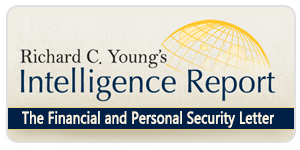
This is an excerpt from the June 2015 issue of Richard C. Young’s Intelligence Report, where Dick Young helps investors compound wealth with income generating strategies that seek to avoid risk. Dick uses his proven inference reading based investment strategy to recommend stocks, bonds, mutual funds, and exchange traded funds generating attractive shareholder returns. Richard C. Young’s Intelligence Report is designed for the discerning investor not the fad driven speculator.
Buy High, Sell Low
The decided tendency of a vast majority of investors is to greatly understate sensitivity to risk. Most investors work off a “buy high, sell low,” emotionally charged template that is a bear to dismiss. The concept of patience is anathema to most. For many, action is the partner of success—when in fact history proves this not to be true. Sadly, the final nail in the coffin of goal construction is the total inability of most investors to embrace the two most important words in successful retirement account investing: compound interest.
OK then, a number of hurdles must be conquered before a suitable goal-oriented plan can be put in place. It is clear from my above menu that the subject of risk sensitivity must be addressed first, followed by some homework on portfolio activity, patience, and compound interest. Once satisfactory common ground is achieved, it is time to determine targeted returns.
Winter Stage of the Business Cycle
The first place you want to look when determining returns is the prevailing level of interest rates and dividend yields. Again, history clearly supports the wisdom of a diversified, balanced portfolio of stocks and bonds. Depending on the individual client, I use boundaries of 75/25 and 25/75. For all practical purposes, today’s interest rates are basically zero, and stock market yields are in the 2% range. A 50/50 portfolio mix provides an expected annual total return of perhaps 1%. Perhaps? Indeed, the economy is in the winter stage of a business cycle recovery, and without the massive artificial stimulus in the form of Fed money printing, it would have already sunk back into recession. And as we all have learned painfully through the years, recession is the bedfellow of falling stock prices.
I Am the Weatherman, Not the Weather
Feeling a little gloomy? Well, it is what it is. I can act as your weatherman, but I cannot be the weather. That said, I have developed a strategy that, if followed exactly, will allow you to win the war. Look back to those sorry interest rate/stock yield numbers. They provide an average portfolio yield of only 1%. That’s not going to get the job done for most investors. But there is a way to proceed, which I will shortly explain.
1% Quarterly Draw
First, let’s complete the loop for your overall targeting. Through the decades, I have suggested a 4% annual portfolio retirement, refined to a quarterly 1% of total assets draw. I explained not long ago how, in the current low interest rate environment, I am uncomfortable with even such a reserved draw. You now see why. Whenever you cannot meet a 1% quarterly portfolio draw from interest and dividends alone, you must recognize that you have a significant problem. The tendency for most investors is overdrawing portfolios while engaging in dangerous speculative investment options. Not good!
